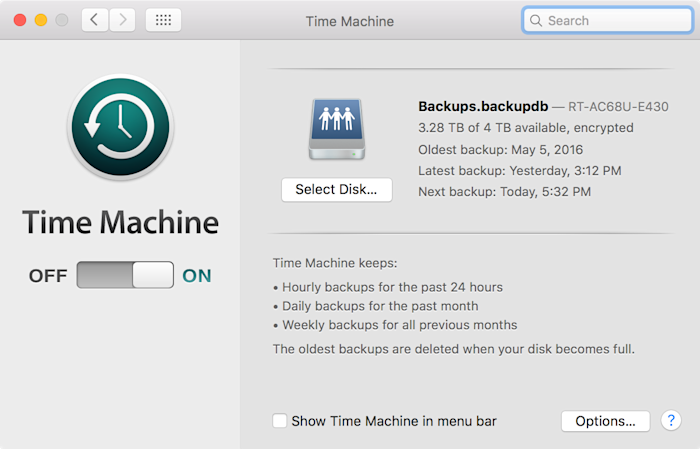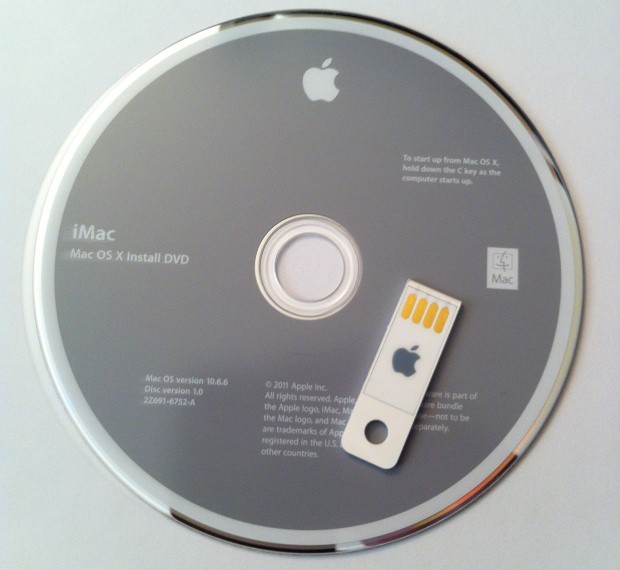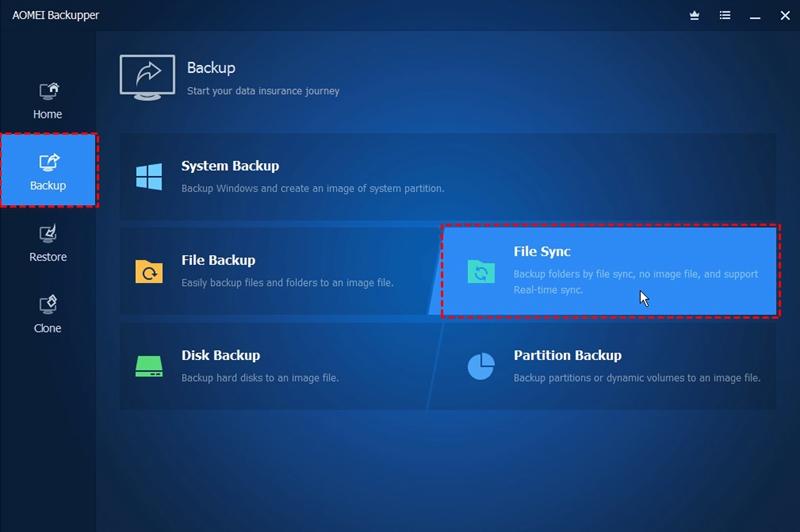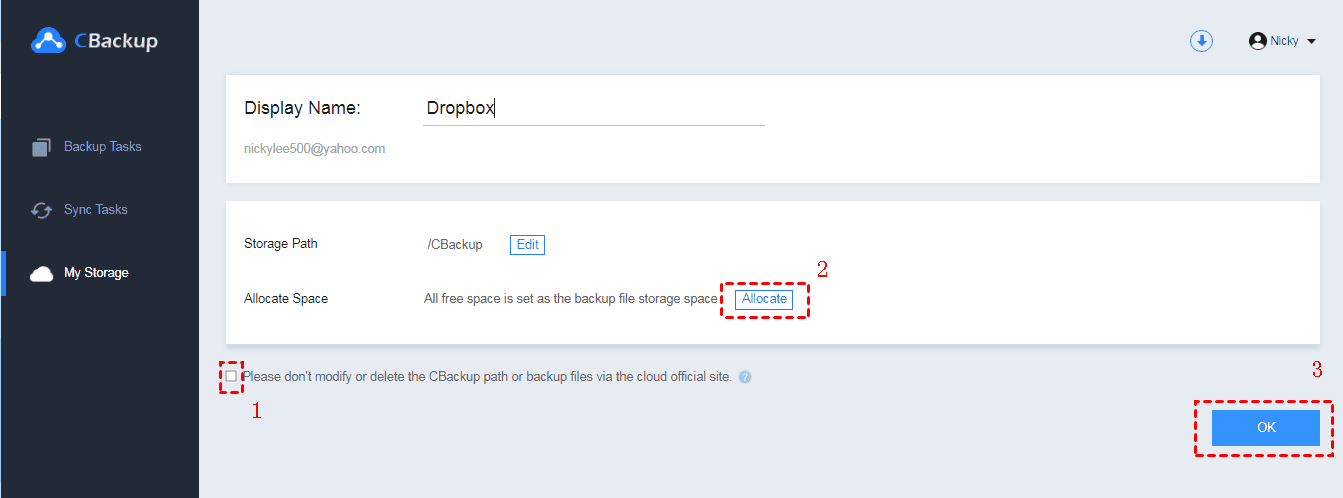Almost everyone knows that backing up all of the files on your computer or any other device you have frequently is a good practice.
- Backup Dropbox To External Hard Drive Mac Laptop
- Apple External Hard Drive Backup
- Backup Dropbox To External Hard Drive Mac Download
- External Hard Drive Backup Mac
- Can I Use Dropbox To Backup My Mac
- I want to backup about 500 GBs from an external hard drive to my Dropbox Pro account. My computer's hard drive is nowhere near as large as my EHD, so I can't just move the file to the Dropbox folder. I've tried using MacDropAny by Zibity to create a symbolic link, but when my EHD is no longer connected, Dropbox seems to assume these.
- Why Need to Transfer Files from Dropbox to Computer? Usually, you need to put your all kinds of files like work documents, family photos/pictures, favorite videos, etc. On cloud drives (Dropbox, Google Drive, OneDrive and so on) when you do not have enough local storage to save them.
- If the Dropbox folder and the folders you’d like to back up aren’t on the same hard drive, move them to the same hard drive. For example, if your folders are on an external hard drive, and the Dropbox folder is on your computer’s hard drive, move them to the same hard drive. If you don’t see your files after turning on computer backup.
You never know when your device, even if it’s reliable and secure (like a MacBook Pro), might fail, break, get lost or stolen. If any of these things happen it can be devastating but if you backup your data with an external hard drive, you at least have all of your files and other important information.
Since you'll be using the external hard drive to back up your entire Mac hard drive, the drive should be bigger than your Mac's drive (e.g., if the Mac's drive is 256 GB, get at least a 500 GB external drive). Method 1 – Using the Dropbox app Step 1 – Plug in your external hard drive to the computer and make sure that it detects it. Step 2 – Click on the Dropbox logo at the bottom-right edge of your PC taskbar. Step 3 – Click on the gear icon or settings button at the next window's top-right edge.
These days, backing up your MacBook Pro is easy to do and if you own one of these computers you should learn how to back it up and do it often.
It can be as easy as a click of a button but we will take a look at all of the steps necessary to backup your Mac as well as some other information to consider during the process.
Why Backing up MacBook Pro to an External Hard Drive
The reasons to backup your MacBook Pro to an external hard drive are pretty obvious but if you are unfamiliar with the reasons, or with backups in general, you should learn about them.
Backing up your computer basically means that you are making copies of all the important information found on your computer. This could be all of your photos, music, videos, files, and any other piece of data found within your MacBook.
All of this data exists stored and saved within the hard drive built into your computer but making a backup of these is a good idea for a couple of reasons. Your MacBook Pro is an electronic device and these devices can break or fail due to accidents or because of manufacturer’s defects.
Also, because of the popularity and cost of Apple products, your computer might be a target for theft. Because of these possibilities, it is important to back up your computer in case any of them happen to you.
An external hard drive makes it really easy to back up your computer so it’s a good idea to purchase one and learn the steps to back everything up.

City designer 3 free download torrent. Hard drives can vary in cost and storage capacity but even though they are an added expense, they are more than worth it in the worst-case scenario of a broken or stolen MacBook.
How to Backup MacBook Pro to External Hard Drive
The first step to backing up your MacBook Pro is to connect your computer to an external hard drive.
Hard drives come in many different shapes and sizes but all have a cord that will connect the drive into your computer. Plug this cord into the corresponding input on your MacBook Pro to allow the backup process between the hard drive and your computer to begin.
Depending on what model MacBook Pro you have and which hard drive, this cord could be USB, Thunderbolt, or Firewire.
When you plug the hard drive into your computer, a popup box should appear that will ask you if you’d like to backup your computer using Apple’s built-in backup program, Time Machine.
When you see this box above, go ahead and click on Encrypt Backup Disc and then the Use as Backup Disk button.
You can also open up the Time Machine settings manually if it doesn’t happen to appear automatically.
To do this go to the Apple menu in the top left corner of your screen then click on System Preferences and then on Time Machine.
Once in the Time Machine box, click on Select Backup Disc to choose your external hard drive as the device to store the backup.
Click on the Use Disk button once you locate your external hard drive and your MacBook Pro will begin to back up your files.
If you turn Time Machine on and keep your computer plugged into your external hard drives, it will complete backups at scheduled intervals so you don’t have to worry about going through this process that often. You can choose the frequency you’d like backups to take place but having it set to automatic is an easy way to make sure your most current data is backed up.
Time Machine can automatically back up files every hour for 24 hours, once a day for a week, and weekly for previous months of use. The first time you back up your MacBook Pro to an external hard drive, it can take a long time.
After this initial backup, it shouldn’t take as long and if you have Time Machine set up to conduct automatic backups, you might not even realize the backups are occurring. Autocad cannot explode spline.
Final Thoughts
Backing up your files from your MacBook Pro to an external hard drive is important and you should really consider doing it.
It is a simple step you can take to recover important information in case of something bad happening to your computer. The automatic backup feature on Time Machine makes things even easier and once you follow the steps above, your computer will be consistently backed up.
There are many different options when it comes to choosing an external hard drive. The main thing to consider is how much storage space you need.
I’d recommend getting at least a 1TB size hard drive and that should cover an average person’s files from their computer.
If you want a smaller drive, 500GB might be enough but hard drives these days are pretty compact so getting one with a larger capacity is recommended.
Do you backup your MacBook Pro often? What size hard drive do you use?
Computer backup lets you back up certain key folders on your computer, such as “Desktop”, “Documents”, and “Downloads”, to Dropbox.
After backup, those folders, and the files within them, are still accessible from the same place on your computer, while also backed up to Dropbox. Any changes or deletions you make to those folders from your computer, or in Dropbox, will be reflected in both places. You can access those folders, which are backed up under “My Mac [Your device name]” or “My PC [Your device name]”, from anywhere you use Dropbox, such as dropbox.com, the Dropbox mobile app, and the Dropbox desktop app on other computers. For Dropbox Business team members using the team folder structure with the purple member folder, their folders will be backed up in that purple folder.
Like any files stored in Dropbox, you can view version history on these files and restore previous versions.
How to set up computer backup
Before setting up computer backup, do the following:
- Close all open files and applications on your computer.
- Install the Dropbox desktop application, if you haven’t already.
- If you’ve paused syncing, resume it.
- Connect to internet.
- If any of the folders are already backed up to another cloud storage provider (like iCloud, OneDrive, or Google Backup and Sync), disable those backups and ensure your files are back in their original folders on your computer. (If you’re not sure how, consult that company’s help center).
To set up computer backup:

- Open your Dropbox desktop app preferences.
- Click the Backups tab.
- Click Set up.
- Note: If you’re on a Dropbox Business team and you don’t see this option, your admin may have chosen not to allow you to enable it.
- Check the folders you’d like to back up.
- If your work and personal accounts are connected, choose which Dropbox account you’d like to back up your folders to.
- Click Set up and follow the steps.
- Mac users: Click OK when prompted to give Dropbox permission to access your folders.
If any files fail to back up, a shortcut will be created in Dropbox called “Files on my computer” that will take you to their location on your computer.
Troubleshoot computer backup

If you experience errors during setup

If you get an error while setting up computer backup, try the following troubleshooting steps before attempting setup again:
- Close any files or applications that use data in the folders you’d like to back up.
- Disable any other cloud-storage-provider folders (like iCloud, OneDrive, or Google Backup and Sync) from the folders you’d like to back up and ensure your files are back in their original folders on your computer.
- Allow edit permissions on all files and folders you’d like to back up.
- Learn how to allow permission on Windows.
- Learn how to allow permissions on Mac.
- If you’re using a Mac, make sure you allow access to files and folders in your security and privacy settings.
- Note: You must have admin permissions on your computer to change permissions.
- If the folders you’d like to back up aren’t in their original, default locations, move them back.
- If the Dropbox folder and the folders you’d like to back up aren’t on the same hard drive, move them to the same hard drive. For example, if your folders are on an external hard drive, and the Dropbox folder is on your computer’s hard drive, move them to the same hard drive.
If you don’t see your files after turning on computer backup
Backup Dropbox To External Hard Drive Mac Laptop
Any files that failed to backup to Dropbox will be in a folder called “Files on my computer” instead.
Mac users: If you don’t see your files in Finder after backup, force quit Finder and relaunch it.
If you have issues with an application after turning on computer backup
Restart the application. In particular, we recommend restarting:
- Firefox
- Google Chrome
- Microsoft Money
- Microsoft Outlook
- Safari
- If you’re on Windows and using Microsoft Edge, your Microsoft Edge downloads won’t sync to your “Downloads” folder in Dropbox with this feature. To sync your Microsoft Edge downloads to Dropbox anyway, manually change where your Microsoft Edge files download to Dropbox.
If your files aren’t syncing as expected
Make sure the Dropbox desktop application is installed on your computer.

Learn how to check syncing status, prioritize which files sync first, or prevent some files from syncing.
Apple External Hard Drive Backup
If you can’t move, delete, rename, or share your folders after backup
After backup, you can’t move, delete, or rename the top-level folders you’ve backed up (like “Desktop”, “Documents”, and “Downloads”, or “My Mac” and “My PC”). However, you can move, delete, and rename the files within them. You won’t be able to share those folders in Dropbox by inviting people to them via email, but you can still share those folders with a link and share any files or folders within them.
Turn off computer backup
Notes:
- You must have the Dropbox desktop application installed to turn off computer backup. If you already uninstalled the desktop application, reinstall the desktop application to turn off computer backup.
- Deleting the files or folders in “My PC”or “My Mac” will delete those files from both Dropbox and your computer.
- If you no longer have access to the device, you can turn off computer backup by unlinking the device from your Dropbox account.
Little snitch nightly downloadgooglerenew. To turn off computer backup:
- Open your Dropbox desktop app preferences.
- Click the Backups tab.
- Click Manage backup.
- Uncheck the folders you’d like to stop backing up to Dropbox or uncheck My Mac/My PC to turn off backup for all folders at once.
- Click Save.
- Choose Keep content in folders on this PC/Mac or Leave content in Dropbox.
- If you choose Keep content in folders on this PC/Mac, the files and folders you stopped backing up can be found in their original folders on your computer.
- If you choose Leave content in Dropbox, new files you add to those folders will save to their original folders on your computer, but the files and folders you previously backed up to Dropbox with computer backup will remain in your Dropbox account. On your computer, they’ll be accessible by shortcuts, in their original folders, called “My files in Dropbox”.
- Note: If you see Set Up instead, it means computer backup is already off.
- Click Stop backup.
- Click Close.
Admins: Choose if your team can use computer backup
Backup Dropbox To External Hard Drive Mac Download
Admins can choose whether or not team members can enable computer backup.
If an admin chooses not to allow team members to enable computer backup, team members won’t see the option to enable it in their account. Computer backup won’t be disabled for team members who are already using it and it isn’t disabled for team members who already enabled it on their accounts before they joined the team. To check which team members have already enabled it, admins can search the admin insights dashboard for “Enabled/disabled backup for computer”.
External Hard Drive Backup Mac
To choose if your team can use computer backup:
Can I Use Dropbox To Backup My Mac
- Sign in to dropbox.com with your admin credentials.
- Click Admin Console.
- Click Settings.
- Click Backups.
- Under Allow your team to enable computer backup, toggle to On or Off.
- Note: It may take up to an hour for the change to take effect.
